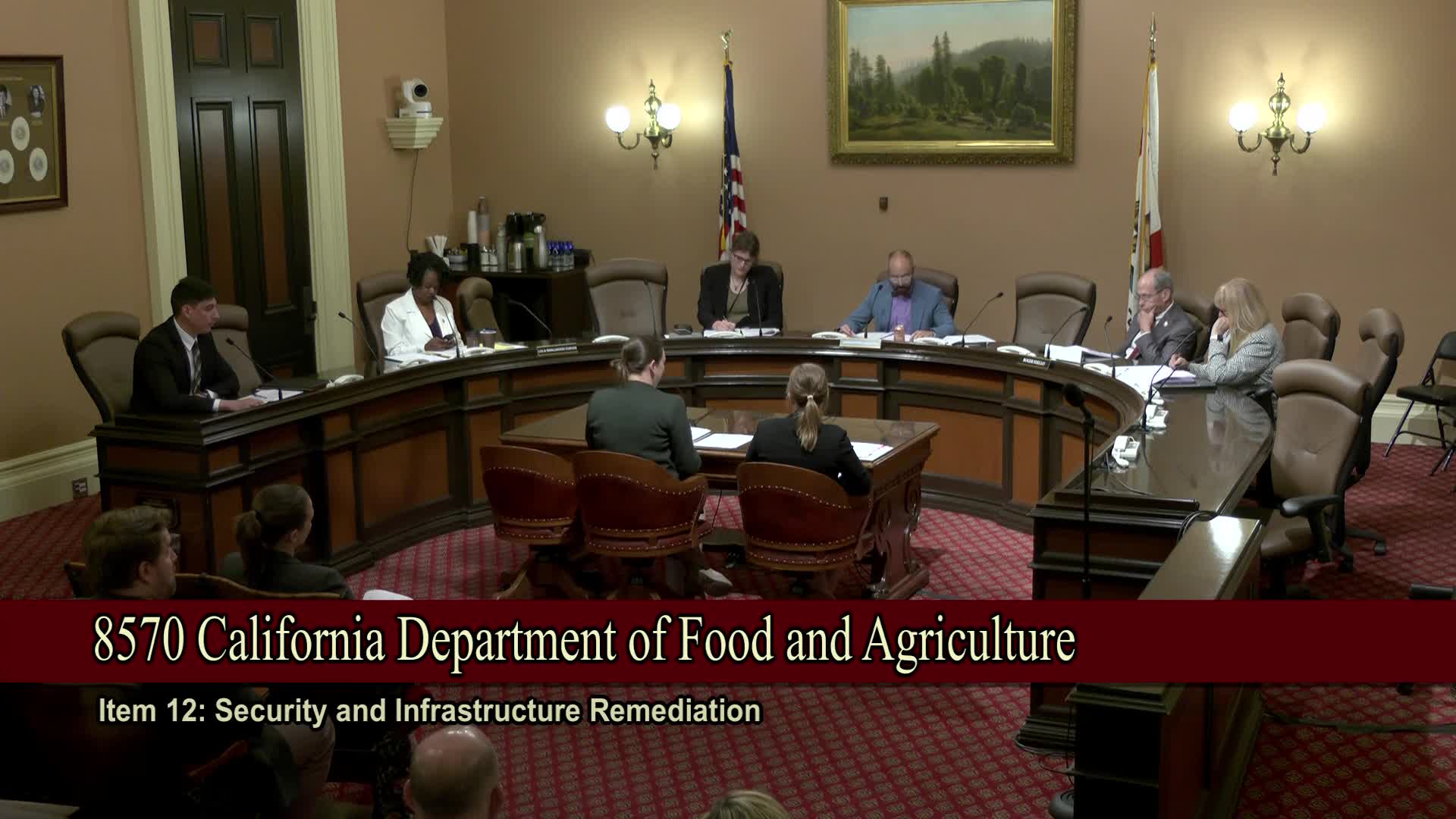California allocates $1.6M to Turlock Animal Welfare Hospital operational costs
May 01, 2025 | California State Senate, Senate, Legislative, California
This article was created by AI summarizing key points discussed. AI makes mistakes, so for full details and context, please refer to the video of the full meeting. Please report any errors so we can fix them. Report an error »

In a recent meeting of the Senate Budget and Fiscal Review Subcommittee No. 4, critical discussions unfolded regarding the funding for the new Turlock North Valley Animal Health Laboratory, set to enhance California's capacity to manage animal health crises. As the meeting progressed, the subcommittee members were presented with a substantial budget proposal that includes a general fund increase of $1.61 million for the fiscal year 2025-26 and $3.3 million for 2026-27, aimed at covering the operational costs of this state-of-the-art facility.
Scheduled for completion in December 2025, the new laboratory will span an impressive 41,000 square feet, a significant upgrade from the existing facility's 5,100 square feet. This expansion is not merely about size; it represents a leap in technological capabilities, featuring advanced biological containment systems and improved heating and ventilation. The facility is poised to play a vital role in addressing public health concerns, particularly in light of recent outbreaks of bird flu affecting the state's dairy industry.
Senator Anilio raised pertinent questions about the current operational costs of the existing facility, highlighting the need for clarity in assessing the budget request. The discussions revealed that the current laboratory is limited to avian services, necessitating the transfer of samples to other facilities, which has resulted in delays. The new laboratory aims to eliminate these bottlenecks, allowing for timely animal necropsies and testing, particularly for large mammals, which is crucial for the state's largest dairy-producing region.
However, the funding proposal has sparked debate. Some members expressed concerns about the reliance on the general fund, questioning why the facility could not be partially funded through special agricultural funds. The response from the Department of Finance clarified that existing regulations restrict the use of agricultural funds for purposes outside their original intent, emphasizing that the benefits of the new facility extend beyond the agricultural sector to encompass statewide public health.
As the subcommittee deliberates on this significant investment, the implications are clear: the new Turlock facility is not just an upgrade in infrastructure; it represents a proactive approach to safeguarding animal health and, by extension, public health in California. The discussions at this meeting underscore the delicate balance between agricultural interests and public health responsibilities, a theme that will likely resonate as the state navigates future funding decisions.
Scheduled for completion in December 2025, the new laboratory will span an impressive 41,000 square feet, a significant upgrade from the existing facility's 5,100 square feet. This expansion is not merely about size; it represents a leap in technological capabilities, featuring advanced biological containment systems and improved heating and ventilation. The facility is poised to play a vital role in addressing public health concerns, particularly in light of recent outbreaks of bird flu affecting the state's dairy industry.
Senator Anilio raised pertinent questions about the current operational costs of the existing facility, highlighting the need for clarity in assessing the budget request. The discussions revealed that the current laboratory is limited to avian services, necessitating the transfer of samples to other facilities, which has resulted in delays. The new laboratory aims to eliminate these bottlenecks, allowing for timely animal necropsies and testing, particularly for large mammals, which is crucial for the state's largest dairy-producing region.
However, the funding proposal has sparked debate. Some members expressed concerns about the reliance on the general fund, questioning why the facility could not be partially funded through special agricultural funds. The response from the Department of Finance clarified that existing regulations restrict the use of agricultural funds for purposes outside their original intent, emphasizing that the benefits of the new facility extend beyond the agricultural sector to encompass statewide public health.
As the subcommittee deliberates on this significant investment, the implications are clear: the new Turlock facility is not just an upgrade in infrastructure; it represents a proactive approach to safeguarding animal health and, by extension, public health in California. The discussions at this meeting underscore the delicate balance between agricultural interests and public health responsibilities, a theme that will likely resonate as the state navigates future funding decisions.
View full meeting
This article is based on a recent meeting—watch the full video and explore the complete transcript for deeper insights into the discussion.
View full meeting
